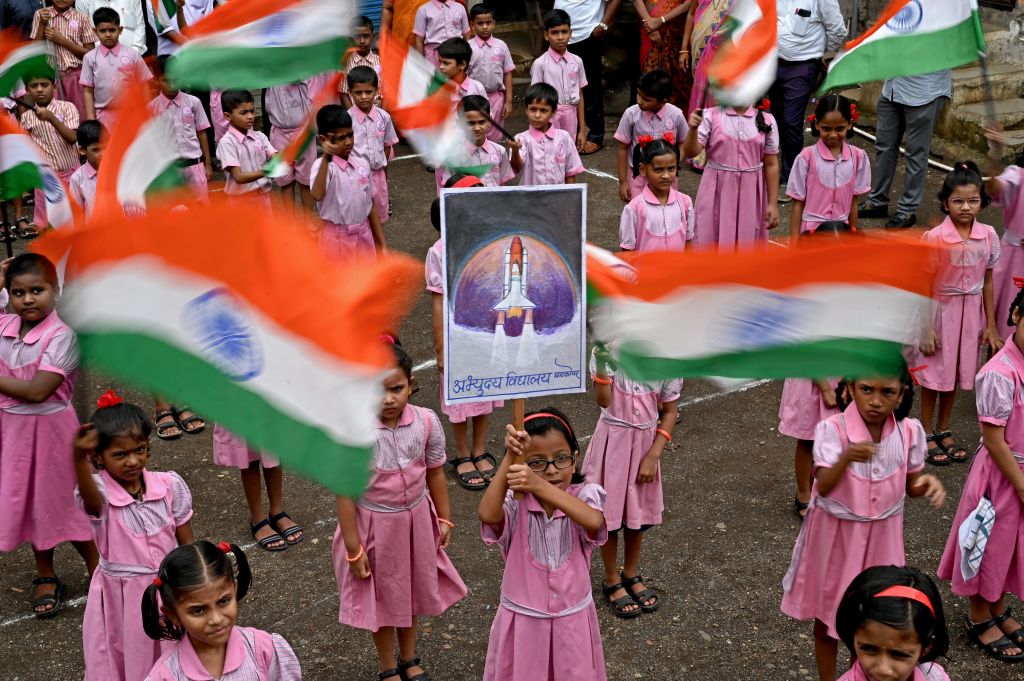India is preparing to land robots on the Moon this Wednesday as part of its Chandrayaan-3 mission, which consists of a lander called Vikram and a rover called Pragyan.
If Chandrayaan-3 sticks the landing, it will become India’s first successful mission to the Moon’s surface as well as the first mission that has ever touched down in the lunar South Pole, a tantalizing region that contains useful resources for human exploration of the Moon, such as water ice. The Indian Space Research Organisation (ISRO) estimates that the landing will take place at about 8:34 AM Eastern Time on August 23; you can watch live coverage of the event at the link below.
Videos by VICE
India’s landing attempt will unfold just days after Russia’s latest Moon shot, the robotic Luna-25, crashed into its target after losing contact with Earth. India’s previous attempt to land on the Moon, known as Chandrayaan-2, also ended in failure after the spacecraft malfunctioned and smashed into the lunar surface in September 2019.
Israel and Japan have likewise tried and failed to land on the Moon in recent years, whereas China has landed three lunar spacecraft since 2013 as part of its Chang’e program. India now hopes to become the fourth nation to land on a spacecraft on the Moon, after the Soviet Union, the United States, and China.
“If Chandrayaan-3 succeeds, it will boost India’s space agency’s reputation worldwide,” Manish Purohit, a former ISRO scientist, told Reuters. “It will show that India is becoming a key player in space exploration.
Chandrayaan-3 blasted off from a launchpad in the Bay of Bengal on July 14 and successfully entered lunar orbit on August 5. On Thursday, the mission’s landing component separated from its propulsion module and began its orbital approach to the lunar surface.
Vikrma, the mission’s lander, carries several cameras and instruments, but its main duty is to safely deliver the Pragyan rover to the lunar South Pole. Pragyam is a 60-pound vehicle designed to haul its spectroscopic equipment across about 1,600 feet of the Moon’s surface.
Vikram and Pragyan are designed to examine the composition of the Moon’s South Pole for about two weeks before the fall of the next lunar night, which will kill both robots with punishing temperatures below -170ºC (274°F).
On Sunday, ISRO posted images of the far side of the Moon taken by Chandrayaan-3 and said the mission’s Lander Hazard Detection and Avoidance Camera was searching for suitable landing sites in the southern polar region.
The Moon’s South Pole has become the central focus of a new wave of lunar surface missions. Some of the region’s craters lie in permanent shadow, never receiving light from the Sun, allowing them to preserve ancient reservoirs of water ice that could provide life support, and fuel, to future Moon bases that might one day support astronauts. The South Pole also contains other materials, like metals and oxygen, that might be useful for human exploration of the Moon.




